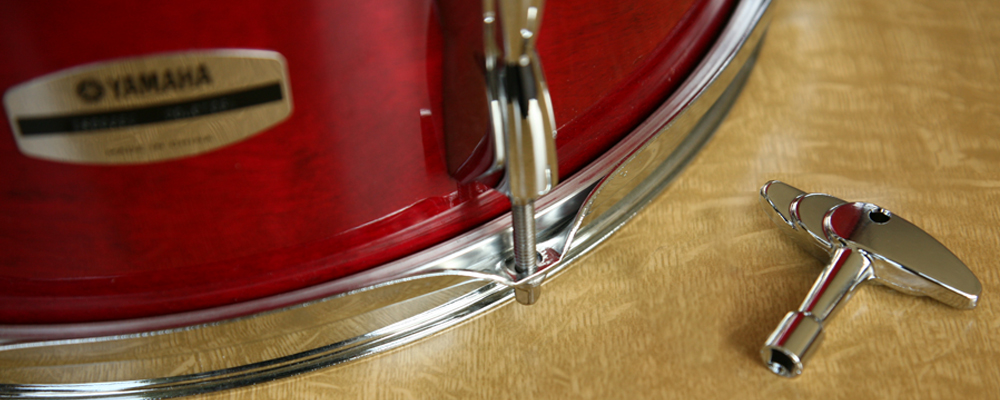Care and Maintenance of a Drum
Daily care and maintenance
The basics: wipe down after use
Drum care is not that difficult. Basically, wipe it down after use. Occasionally, the hardware gets rusty, or parts with screws stop moving properly, so wipe the set down as much as possible. The piano polish called Piano Unicon is remarkably versatile, and can be used for polishing fittings, shells, and cymbals.
However, some say that polishing the cymbals too much will ruin their tone. How much polishing is enough is determined by balancing the tone of the cymbal with the look of the cymbal.
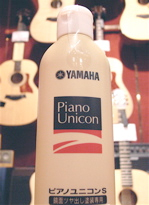
Piano Unicon
Polishing the cymbals to a high gloss
There are many opinions about cymbal polishing. There are those who say, "it is good to polish the cymbals," others who say, "only polish enough to remove dirt," and still others who say, "never ever polish cymbals." It is difficult to say who is right. So, everyone must make their own decision regarding cymbal polishing. Here, we will talk about the methods used by drum shops to care for their cymbals.
The basic care of a cymbal consists of maintaining its original shine. Cymbals are made of metal, but normally they have a clear coating on them so that the metal is not exposed to the elements. Relatively new cymbals that have this coating only require wiping with a soft, dry cloth. Light dirt can be easily removed with Piano Unicon or other piano cleaner to return the cymbal to its original sheen.
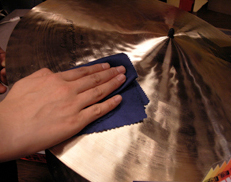
Cymbals are struck with the sticks and touched directly by the hands during normal use, which wears off the coating over time. To bring back the original sheen after the original coating wears off, a special cleaner called cymbal polish can be used to care for the cymbal. Dirt and grease from the hands in particular can cause oxidization and rust that may have a negative effect on the tonal qualities of the cymbal, so cymbal polish should be used to remove this dirt. There is a variety of cymbal polishes on the market. Some are removed with a cloth, others are sprayed on and wiped off with a dry cloth, and others have strong acids that must be rinsed off immediately after polishing. All of them have strong metal polishing agents, and if not used properly, these can damage the cymbal. Thus, the manufacturer's warnings should always be read beforehand and usage instructions followed closely.
When cleaning a cymbal, one must be careful not to damage the tone grooves. There are an infinite number of grooves (tone grooves) on the surface of a cymbal, and the shape and depth of these grooves help give the cymbal its characteristic tone. If polished too much, the tone grooves can be flattened, making the cymbal smooth, and this will permanently alter the tonal qualities of the cymbal.
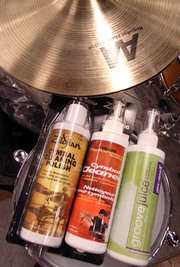
Left: polish applied with a cloth.
Center: spray polish.
Right: This polish requires washing immediately after cleaning.
In addition, when finished polishing, be sure to wipe off any excess polish with a dry cloth. This point about removing excess polish is an important one. At the drum store, they wash cymbals after polishing to ensure that all the polish is gone. They, they wipe the cymbal with a dry cloth to remove any moisture. This is more effective than wiping it off with a dry cloth, so you should try washing with water after using cymbal polish.
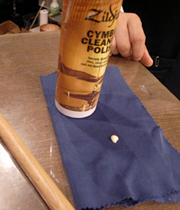
This is the amount of polish that should be used for one cymbal.

